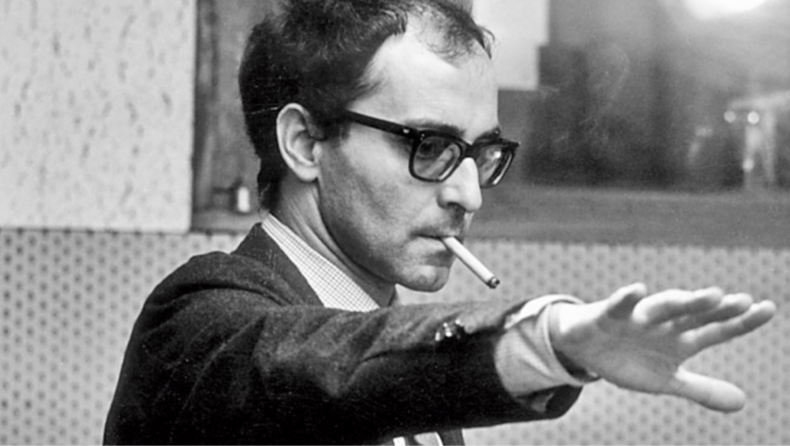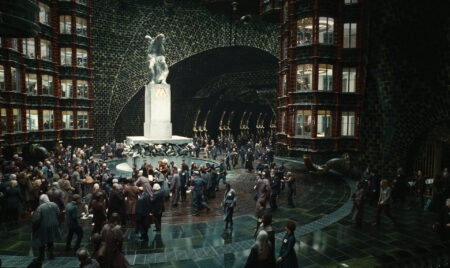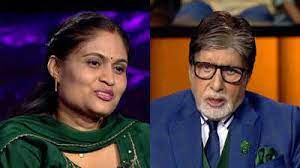“Cinema is the most beautiful fraud.”
– Jean-Luc Godard
The legendary Franco-Swiss film director Jean-Luc Godard has died at the age of 91 in Rolle, Switzerland. His longtime legal adviser, Patrick Jeanneret, said Mr. Godard died by assisted suicide after suffering from “multiple disabling pathologies.” He said, “Now it’s enough” and wanted to die with dignity, so that’s exactly what he did.
He is known for his most innovative, provocative, and moving films and deserves the title “founder of modern cinema.” He has been a great inspiration to renowned filmmakers like Martin Scorsese and Quentin Tarantino.
What was the French New Wave and the idea behind it?
We are so driven by Hollywood that we forget that cinema is made world-wide and people from all over the world are influencing cinema.
The French New Wave, which appeared in the 1950s and changed the way people thought about movies, was one of the most significant shifts in history.
The New Wave is the film movement that became popular in the late 1950s in Paris, France. It was characterized by its rejection of traditional filmmaking conventions, allowing improvisational storytelling techniques instead of strict narratives.
The idea was to give directors full control of their creativity and work. The results changed the world of cinema.
Godard emphasized that the story should have a beginning, middle, and end, but not necessarily in that order.
When did the French New Wave happen?
This art came out of the hard times, shortly after World War II. France was extremely poor and in disarray. And as the new artists emerged, they were broke and had no money to make those French classical films.
Therefore, they had to invent a new way of shooting and editing films with the minimal resources they had. As it is said, “Necessity is the mother of invention.”
How was the French New Wave born?
Alexandre Astruc advanced in his manifesto “The Birth of a New Avant-Garde: The Camera-Stylo.”
(Published in L’Écran on 30 March 1948)
The notion that “cinema was in the process of becoming a new means of expression on the same level as painting and the novel, a form in and by which an artist can express his thoughts, however abstract they may be, or translate his obsessions exactly as he does in the contemporary essay or novel.”
This essay was inspired by the New Wave filmmakers to try out new things.
Jean-Luc Godard along with his New Wave filmmakers, Éric Rohmer, Jacques Rivette, and Claude Chabrol, Agnes Varda-
They wanted to experiment with film forms and styles but lacked the funds to do so. As a result, instead of succumbing to studio stylings, they preferred portable equipment for a run-and-gun style.
Fragmented, discontinuous editing was used, as well as long takes that allowed actors to explore a scene. The combination of realism, subjectivity, and commentary allowed these films to have ambiguous characters, motives, and even ambiguous endings.
This is how the French New Wave was born.
Techniques brought in by Jean-Luc Godard are even looked up to today-
He began challenging conventions with his 1960 feature debut, ” À bout de souffle (Breathless).” What Breathless is most commonly known for is Godard’s style of editing, which made the jump cut popular and acceptable. He brought iconoclastic shooting techniques. Films at this time were expected to follow a smooth digression of editing, with every cut following a very “logical” pattern.
Godard completely did away with this generic formula for storytelling, and instead relied on unexpected, quick jumps in editing. He dragged the cinematographer, Raoul Coutard, on a wheelchair to shoot the film, as the dolly was too expensive for them.
They used natural light, had no sound stages, dubbed all the scenes after they were shot, and took more time in writing the script while actually shooting. Breathless carved a niche for independent filmmakers and changed the course of cinema overall.
“From what was expected to be – to anything it wanted to be.”
He made it true that all you needed to make a film was a camera and an idea.
Interview of Godard with Dick Cavett –

People around the world showed condolences ..
Readmore- The emergence of Modern Cinema and Urban Storytelling.













